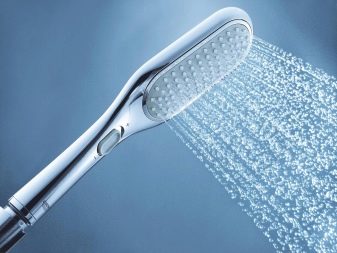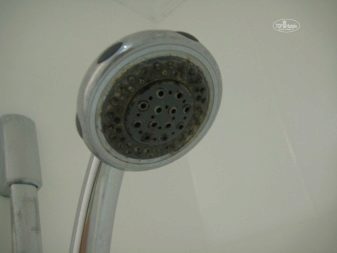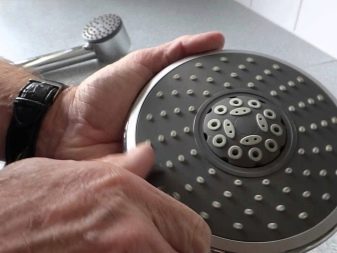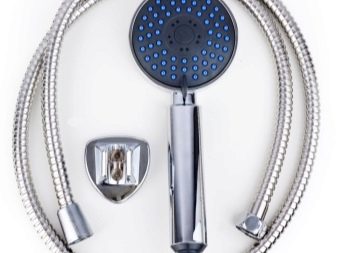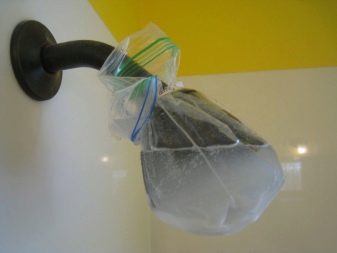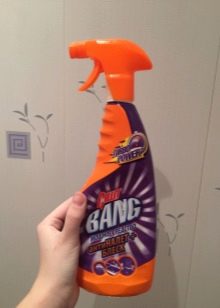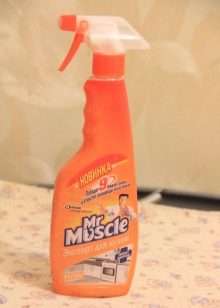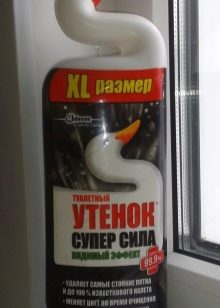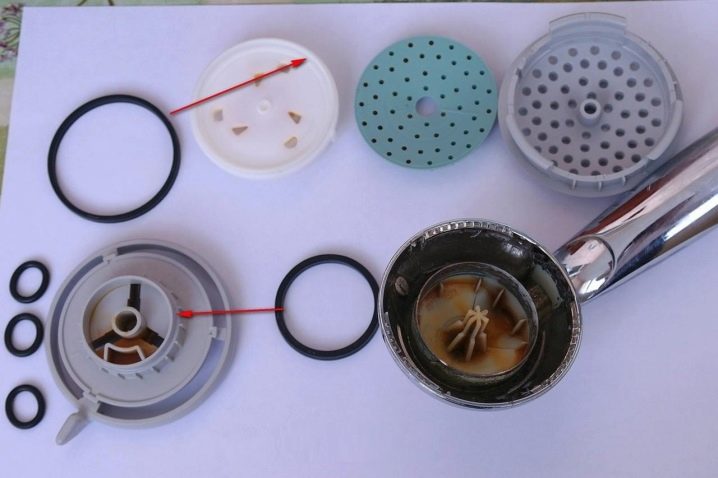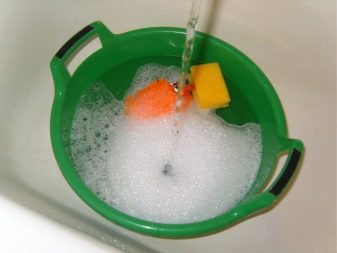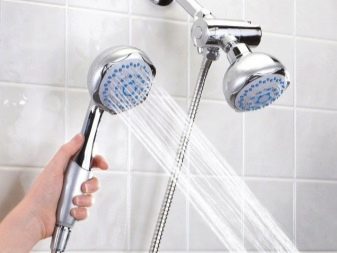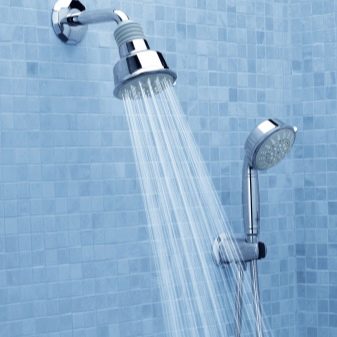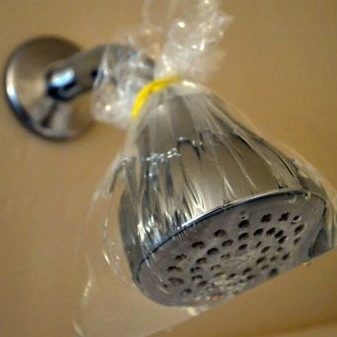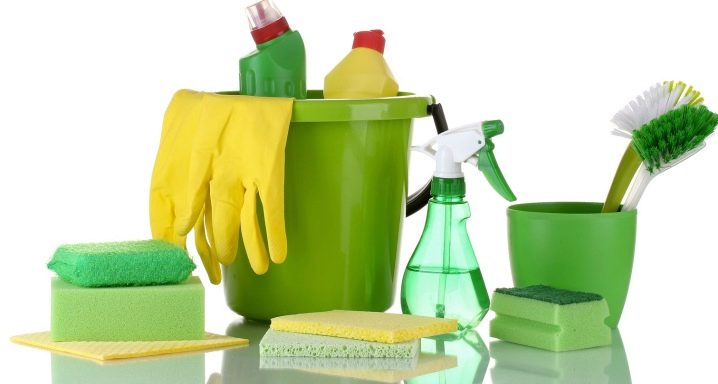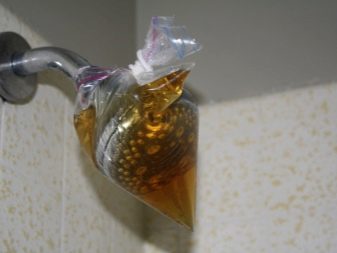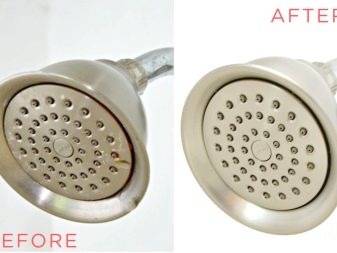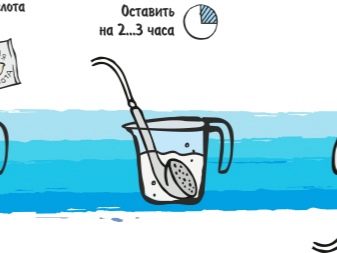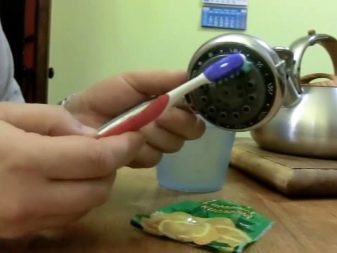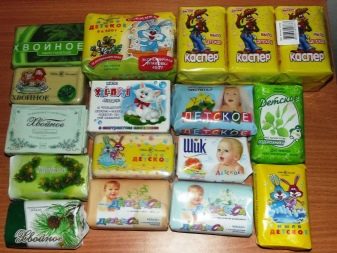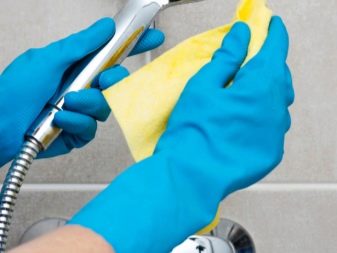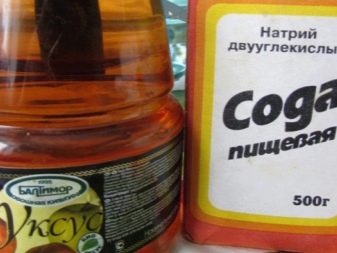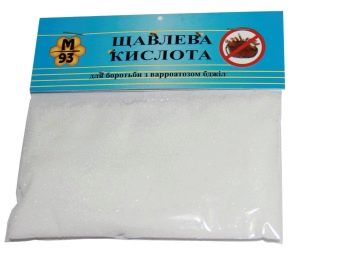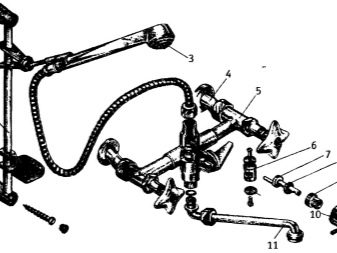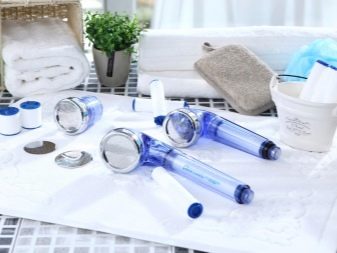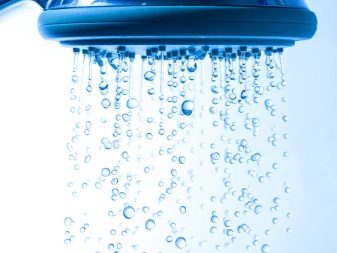The subtleties of cleaning watering cans for the shower from lime scale
After repair, all the plumbing in the house has an ideal appearance, but months, and even years of use, give their results, and soon it becomes covered with bloom. This applies to faucets, metal elements and a shower head, which ceases to function normally and causes discord in the general situation.
Cleaning the watering can from limescale is a rather complicated and tedious process., but there are many methods and techniques that make it much easier to clean the bathroom. It is important to understand that it is almost impossible to get rid of limescale permanently, so experts advise regularly to take care of plumbing fixtures in order to avoid complex contaminants that are difficult to remove by conventional means.
Training
At the preparatory stage, it is necessary to determine what exactly was clogged up with bloom, since not only the watering can but also the hose itself can become dirty. You can check this when the shower is disassembled. First, a stream of water is individually passed through a watering can, and then through a hose. If the hose passes water with difficulty, it means that there was accumulated so much plaque that it narrowed the passage.
When the watering can not miss the water or it is difficult, you need to wash the nozzles, which are responsible for good water pressure.
Clean the nozzle and faucets inside at home is not difficult if you follow the advice of professionals. Remove any possible contamination.
Basic tricks and tricks
The most popular option for cleaning plumbing, in particular, watering can, is the use of hard and well-known household chemicals. This applies to products that contain potent components like chlorine. Such means as “Toilet duckling”, Cillit Bang, “Mr. Muscle” or Sarma allow you to remove plaque and any other contaminants in a short time.
Cleaning steps
You must follow the step-by-step instructions for cleaning the watering can.
- Before starting the cleaning, it is advisable to disassemble the watering can in order to clean all the outlets well. It is better to carry out the disassembly process according to the instructions, since watering cans are of different types, and some of them are not amenable to disassembly. If the instruction is lost, and the sanitary ware cannot be disassembled, do not use force. It is possible that a watering can is installed in the shower, which cannot be disassembled, and the use of force may result in breakage.
- Some housewives simply wipe the watering can with a cleaning agent with a sponge or hard brush. This option is only suitable for those who regularly take care of plumbing, so there is not much of a raid.
- In most cases, the watering can should be soaked in a basin with a special solution (cleaning agent according to the instructions and water) and left for several hours. Chemical components contribute to the destruction of limescale, so over time it can be easily removed with a conventional sponge or damp cloth.
- It is necessary to check the hard-to-reach places, as the remains of a raid often remain in the watering can nozzles.
- To remove the remnants of plaque from hard-to-reach places, you can use a stiff brush (toothbrush) or toothpicks.
- After all stages of cleaning, it is advisable to rinse the product and wipe it with a dry cloth to a shine in order to avoid various stains or stains from drops.
Cleaning the watering can, which is fixed at height
For each type of watering can you need to choose your method of cleaning. There are such options when the product is fixed at a height and cannot be removed, therefore the method with a pelvis disappears. The hostesses came up with an equally interesting and, most importantly, effective way of cleaning such a watering can.
First, a soap solution is poured into a high-density plastic bag., after which it is put on the shower so that the watering can is completely in the water. The package is fixed, and this design is left for several hours depending on the intensity of pollution.
Folk remedies
Despite their high efficiency, modern detergents do not always cope with pollution, and they may simply not be on hand, so the housewives have come up with many other methods of getting rid of lime deposits using tools that can be found in any home.
Vinegar
This is a fairly versatile tool that allows you to get rid of many types of pollution, including lime scale.It is important to ensure that the percentage of vinegar is not very high, because you can just ruin the coating. It is better to use the most inexpensive option with a concentration of 7%.
It is better to carry out the cleaning procedure with gloves, because vinegar has a high level of acid, which, in contact with the skin, leaves burns or irritation.
Watering can be placed in a container with vinegar, heated to 50 degrees. Instead of a container, you can use a bag that is wrapped around the base of the watering can and fixed by means of elastic or simple knots on the polyethylene itself. This design is left for 20 minutes, after which rinsing is performed, and the watering can is wiped with a rag or sponge to shine.
Lemon (Citric Acid)
Lemon is often used instead of vinegar because the fruit contains a high level of acid, which destroys plaque and allows the watering can to return to its normal appearance. It will take 3 packs of citric acid per liter of water. A watering can is placed in this solution and left for two hours, after which it is washed under running water.
It is useful to pour it with fresh lemon juice before soaking.
Baby oil
The composition of modern children's oils is so diverse and sometimes dangerous that such cosmetics can dissolve limescale. During the cleaning process, it is necessary to put a small amount of oil on the watering can and after a time, clean it with a sponge or a hard brush.
After removing the plaque, you will have to wash the watering can with a soap solution and wipe dry to give it an attractive appearance.
Special solution
With removal of plaque a special cleaning solution works well, which is made from baking soda, ammonia and vinegar. For one liter of water you will need 3 tablespoons of soda, about 150 ml of ammonia and one and a half cups of vinegar. The resulting mixture must be thoroughly mixed and heated to a temperature of 60 degrees.
The watering can is left in the solution for at least 40 minutes, and in difficult cases it is necessary to increase the time. At the last stage, the product is washed with warm water and wiped dry with a napkin.
Oxalic acid
This substance is extremely aggressive, therefore it is used in rare cases. It is used when other chemicals do not cope with the bloom.
Acid can be purchased at a pharmacy, it is not so expensive. The solution is prepared at the rate of 2 tablespoons of acid per 1 liter of water, while the resulting mixture must be stirred until complete dissolution. Concentration can be increased if necessary, but this should be done with extreme caution.
After the solution is prepared, a watering can is immersed in it and left for a while, then the surface of the product is thoroughly cleaned with a brush. Obligatory point is washing the watering can under running water to avoid streaks from the product.
Useful tips
It is important to treat the entire surface, as small areas of contamination often remain in hard-to-reach places. Even small deposits can completely spoil the result, and soon you will have to take up cleaning again.
To avoid serious pollution, it is recommended to wash the watering can more often., as well as all plumbing, because small contaminants are removed by conventional means from plaque, and it is much more difficult to cope with large lime deposits.
Chemicals are dangerous for human health, so they should be used with extreme caution.It is advisable to clean in a well ventilated area and use gloves and a respirator as protection.
If necessary, you can find instructions on your watering can on the Internet.
Special water filters prevent scale formation, which is an excellent prophylactic.
You can install filter nets on the liner of the shower hose, as well as on the inlet of the watering can., which will eliminate the need to constantly deal with limescale.
It is advisable to check the product in an inconspicuous area, since excessively aggressive components can spoil the coating. Do not forget about it.
For each contamination and type of watering can you need to find your means and method so that the cleaning can be carried out with ease and bring visible results.
For information on how to clean the watering can from the shower, see the video below.

